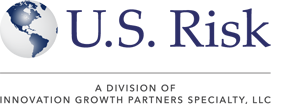Insights
 E&O and More in the Mortgage Industry
E&O and More in the Mortgage Industry
November 1, 2023
Real estate professionals, including mortgage lenders, face numerous risks. These risks can result in significant financial burdens, particularly when legal claims are filed against these professionals for errors or omissions in mortgage contracts.
What are some of the most common liability risks, and how can those in the mortgage industry protect against professional liability risks, including legal challenges? In this article, we explore best practices that supplement the protections of errors and omissions (E&O) insurance programs.
To learn more about Mortgage Errors and Omissions coverage, visit U.S. Risk Financial’s Mortgage E&O/Impairment page.
What are Common Liability Risks in the Mortgage Industry?
The mortgage and home lending industry involves various liability risks that can have significant financial and legal repercussions for lenders, borrowers, and related entities. Understanding these risks is crucial for compliance and risk mitigation strategies. Common liability risks in this industry include:
- Fraudulent Activities: This can involve misrepresentation of information or identity, inflated appraisals, forged loan documentation, or illegal transactions. Both lenders and borrowers can be perpetrators or victims.
- Predatory Lending Practices: These unfair practices target vulnerable borrowers, offering unsuitable products, or imposing unfair or abusive loan terms on a borrower.
- Fair Lending Violations: Lenders must comply with laws that prohibit discrimination based on race, religion, sex, nationality, age, marital status, etc. Violations of laws like the Equal Credit Opportunity Act (ECOA) or the Fair Housing Act can result in liability risks.
- Privacy and Data Security Breaches: Lenders handle a significant amount of personal and financial information. Any breach of data security can lead to legal issues, financial penalties, and loss of reputation.
- Non-Compliance with Industry Regulations: Failing to adhere to regulations set by entities such as the Consumer Financial Protection Bureau (CFPB) in the U.S., or equivalent bodies in other countries, can result in sanctions, fines, and lawsuits.
- Errors and Omissions: Mistakes or negligence in the loan origination, underwriting, or servicing processes, whether due to human error or system failures, can lead to legal liabilities.
- Improper Loan Servicing: This can include incorrect application of payments, failure to properly handle escrow, or inadequate response to borrower inquiries or complaints, leading to borrower disputes and legal actions.
- Risks Related to Mortgage Agents/Brokers: Lenders often work through intermediaries who can bind the company legally. If these agents or brokers misrepresent, act unethically, or make errors, the lender can face significant liabilities.
- Environmental Risks: Lenders might face liabilities if they finance properties contaminated with hazardous substances without proper due diligence.
- Risks from Economic Factors: External factors like economic downturns, housing market crashes, or natural disasters can lead to increased default rates, impacting a lender's assets and stability.
There are many other potential risks, including emerging risks that mortgage lenders may not be prepared for. It is essential that mortgage professionals seek the protection of errors & omission and other professional liability insurance coverages to protect business assets from losses arising from legal claims.
How Can Lenders Minimize Professional Risks?
Mitigating risks in the mortgage and home lending industry is a multifaceted task that requires a strategic approach, incorporating various practices and measures to ensure compliance, security, and operational integrity.
Here's how mortgage lenders can reinforce their risk mitigation strategies:
- Comprehensive Compliance Programs: Lenders should establish and maintain a compliance management system that aligns with local and international laws and regulations. This system should include written policies and procedures, a compliance officer or team, ongoing training, monitoring and corrective action processes, and consumer complaint response mechanisms.
- Regular Training and Education: Continual training programs for employees, especially those in customer-facing roles or those handling sensitive information, are crucial. These programs should update staff on the latest regulatory changes, ethical lending practices, data protection protocols, and internal processes and systems.
- Robust Data Security Measures: Given the sensitive nature of the information handled in the lending process, lenders must invest in advanced cybersecurity infrastructure, secure data storage solutions, and robust data encryption practices. Regular cybersecurity assessments and updates are also vital to protect against evolving digital threats.
- Transparent Communication: Clear, honest, and open communication with borrowers and investors helps build trust and reduces the likelihood of misunderstandings that could lead to disputes or lawsuits. All terms, conditions, and procedures should be transparent and clearly articulated.
- Fair Lending Practices: Adopting fair lending practices and actively monitoring for any discrepancies or discriminatory practices is essential. This involves regular reviews of loan approval and denial statistics to spot and address any potential biases or inconsistencies in the lending process.
- Effective Risk Assessment Models: Use advanced analytics and predictive modeling to assess the credit risk of borrowers more accurately, forecast market changes, and adapt lending practices proactively.
Most importantly, Errors and Omissions (E&O) insurance is crucial for mortgage lenders as it provides financial protection against claims of negligence or inadequate work, which are risks inherent in the lending process. This type of liability insurance covers legal fees, settlements, and other court costs associated with defending against a lawsuit, even if the legal action turns out to be groundless.
For mortgage lenders, E&O insurance is beneficial as it safeguards against human error, system glitches, or oversights that might occur during the intricate processes of loan origination, underwriting, and closing. ◼

